![]()
Charles François Daubigny, The Banks of the Oise at Auvers, 1874
| Artist | Charles François Daubigny, French, 1817–78 |
| Title | The Banks of the Oise at Auvers |
| Object Date | 1874 |
| Medium | Oil on wood panel |
| Dimensions (Unframed) | 15 3/8 x 26 5/16 in. (39.1 x 66.8 cm) |
| Signature | Signed and dated lower left: Daubigny 1874 |
| Credit Line | The Nelson-Atkins Museum of Art. Purchase: William Rockhill Nelson Trust, 33-164 |
Catalogue Entry
Citation
Chicago:
Simon Kelly, “Charles François Daubigny, The Banks of the Oise at Auvers, 1874,” catalogue entry in French Paintings and Pastels, 1600–1945: The Collections of the Nelson-Atkins Museum of Art, ed. Aimee Marcereau DeGalan (Kansas City: The Nelson-Atkins Museum of Art, 2024), https://doi.org/10.37764/78973.5.510.5407.
MLA:
Kelly, Simon. “Charles François Daubigny, The Banks of the Oise at Auvers, 1874,” catalogue entry. French Paintings and Pastels and Pastels, 1600–1945: The Collections of The Nelson-Atkins Museum of Art, edited by Aimee Marcereau DeGalan, Nelson-Atkins Museum of Art, 2024. doi: 10.37764/78973.5.510.5407.
The Banks of the Oise at Auvers demonstrates Charles François Daubigny’s ability as arguably the leading French painter of rivers in the mid-nineteenth century. It represents a tranquil view on the Oise, a tributary of the Seine. Poplar trees grow on the left bank, while the calm, silvery surface of the water is animated by scattered white and yellow lilies as well as touches of pink and lavender. A line of trees to the right casts a reflection in the water, while the distant, warm light suggests an early evening scene. Daubigny further animates his view with two figures rowing a boat in the shadow of the trees. The artist displays a range of techniques, including rapid wet-into-wetwet-into-wet: An oil painting technique which involves blending of colors on the picture surface. paint application in zigzagging brush marks, visible on the left edge of the riverbank, and the use of a palette knife in areas of the sky. Elsewhere, he used a cloth to dab away paint, as in an area of green wash above the boat.1See technical notes by Mary Schafer, NAMA paintings conservator, October 5, 2009, NAMA conservation files. The site of the painting can be specifically identified as the hillsides of the town of Méry-sur-Oise, on the southern bank of the Oise river. This was a view that directly faced Auvers, where Daubigny had constructed his house and studio in 1860.2This identification is based on Louise d’Argencourt’s identification of the related painting, representing the same view, in the Cleveland Museum of Art. Her identification is in turn based on information provided by Daniel Raskin. See Louise d’Argencourt, European Paintings of the 19th Century (Cleveland: Cleveland Museum of Art, 1999), 1:184–85. It would thus have been very familiar to the artist.
Daubigny produced a wide range of work: from early historical landscapes, to agricultural harvest scenes, to Normandy Coast marines, to châteaux views. From the late 1850s on, however, he became particularly known as a river painter. The artist constructed a studio boat, known as Le Botin, in 1857, which facilitated his plein-airen plein air (adjective: plein-air): French for “outdoors.” The term is used to describe the act of painting quickly outside rather than in a studio. study. Daubigny’s Banks of the Oise, painted fifteen years before the Nelson-Atkins panel and shown at the 1859 SalonSalon, the: Exhibitions organized by the French Royal Academy of Painting and Sculpture (Académie Royale de Peinture et de Sculpture) and its successor the Academy of Fine Arts (Académie des Beaux Arts), which took place in Paris from 1667 onward., earned him widespread praise as a painter of the “impression,” years before the Impressionists. Purchased in 1863 by the Musée des Beaux-Arts of Bordeaux, it was even satirized in the press for its extreme naturalism. The French photographer, caricaturist, and journalist Félix Nadar (1820–89) imagined a Salon spectator stripping down to his swimming trunks and trying to dive into the painting (Fig. 1). Thereafter, Daubigny continued to produce large-scale Oise views, as in his 1863 Salon painting Banks of the Oise (Saint Louis Art Museum).
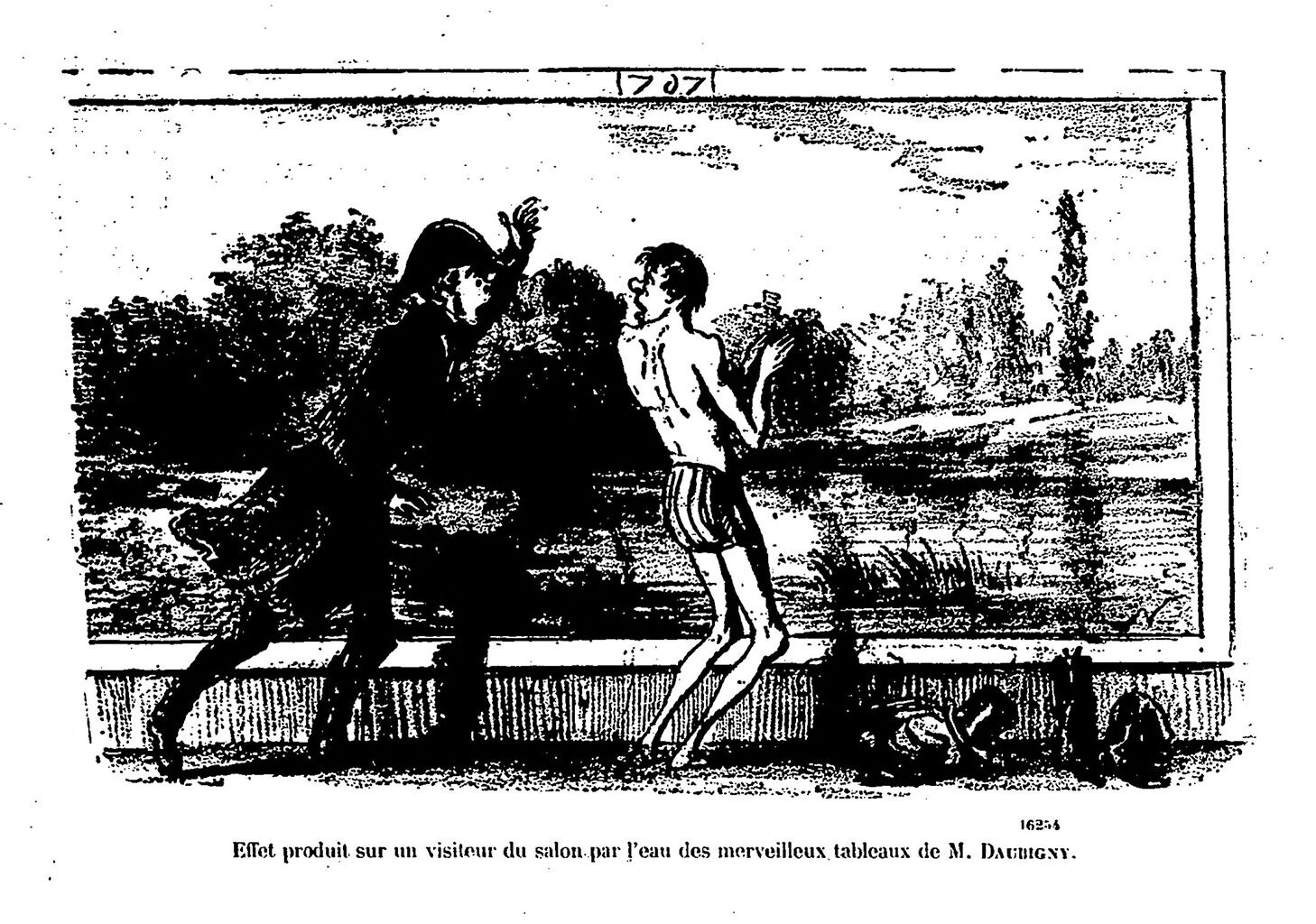
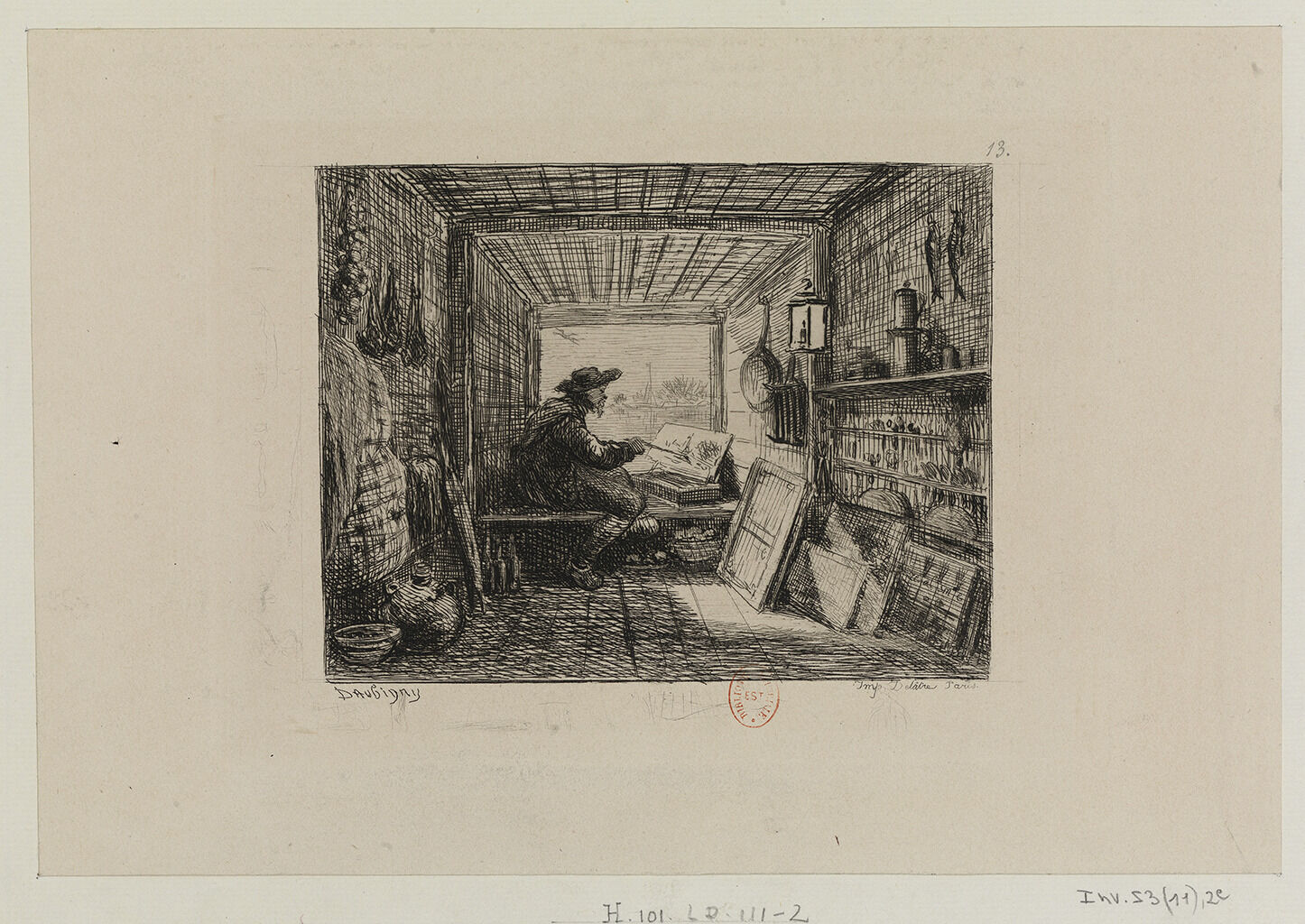
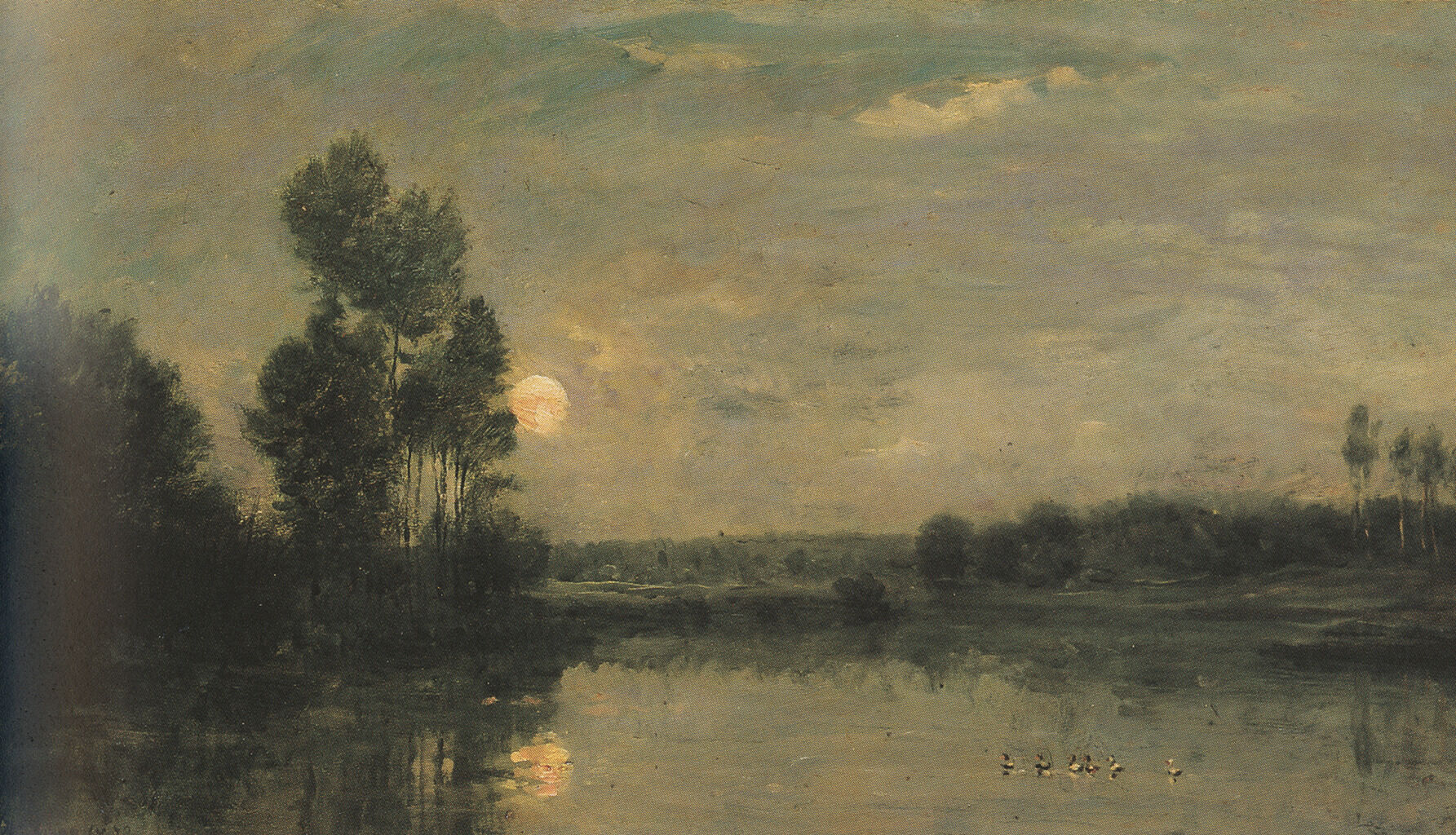
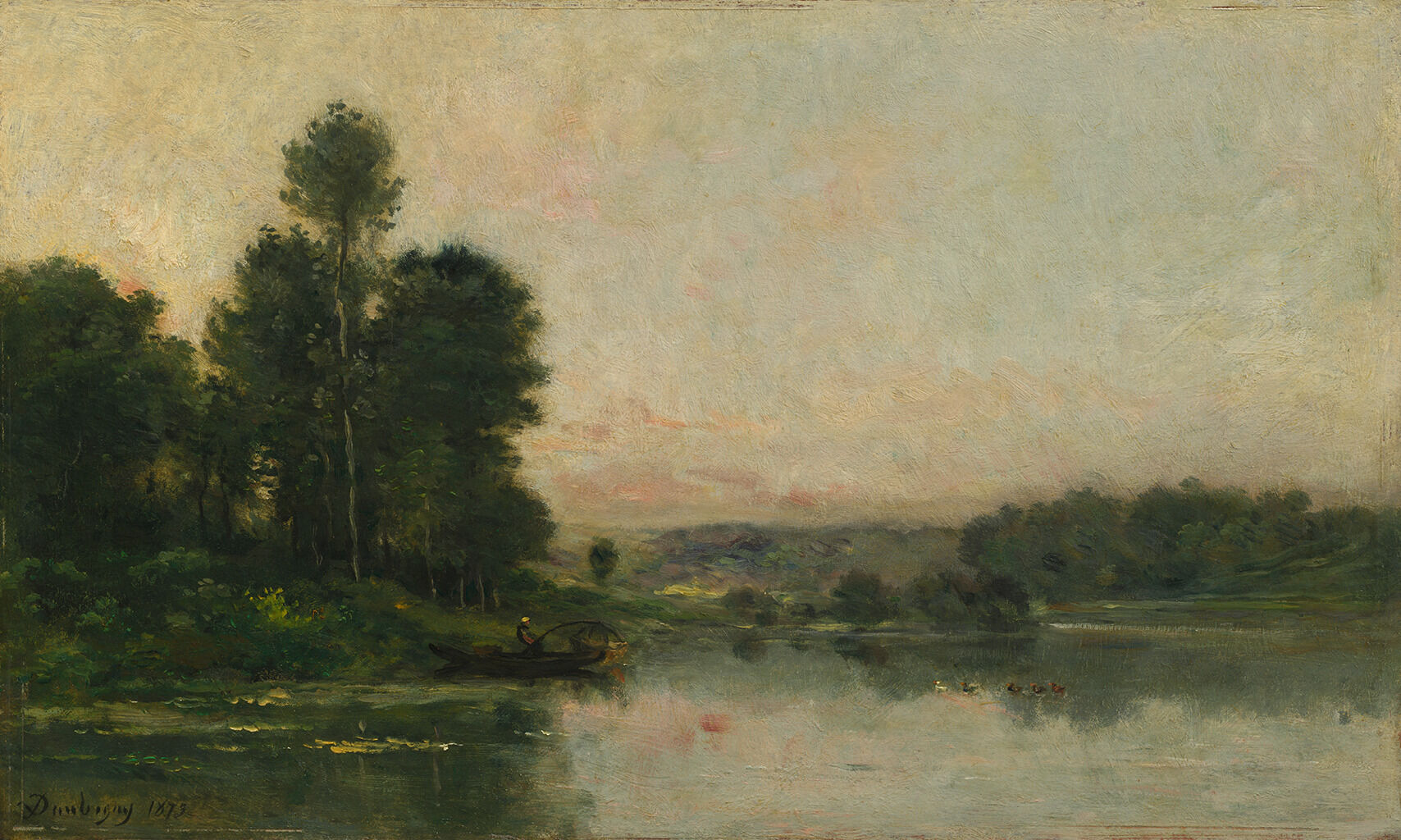 Fig. 4. Charles François Daubigny, The Hillsides of Méry-sur-Oise, Opposite Auvers, 1873, oil on wood panel, 13 9/16 x 22 1/2 in. (34.5 x 57.1 cm), Cleveland Museum of Art, Gift of Mr. and Mrs. J. H. Wade 1916.1048
Fig. 4. Charles François Daubigny, The Hillsides of Méry-sur-Oise, Opposite Auvers, 1873, oil on wood panel, 13 9/16 x 22 1/2 in. (34.5 x 57.1 cm), Cleveland Museum of Art, Gift of Mr. and Mrs. J. H. Wade 1916.1048
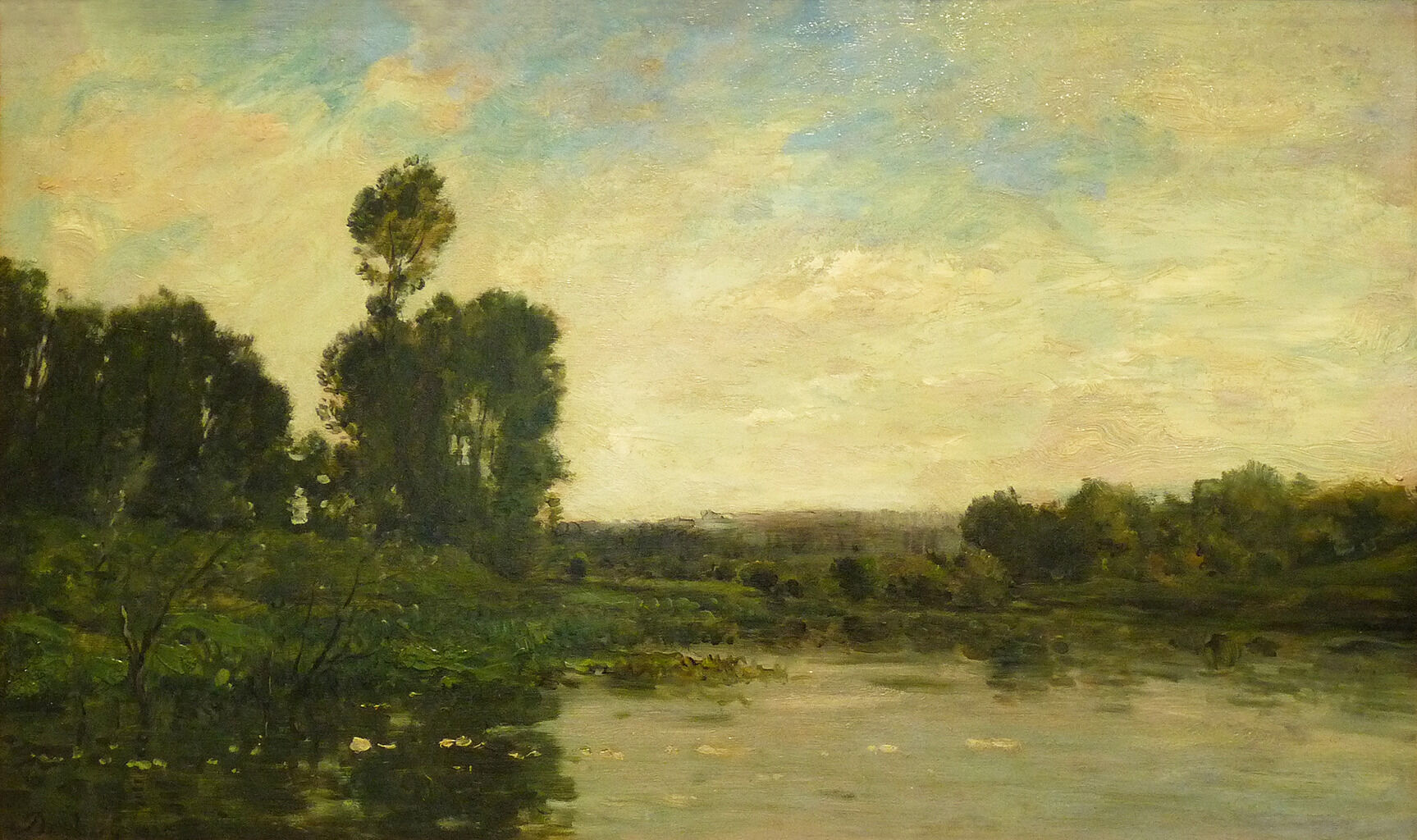 Fig. 5. Charles François Daubigny, Bords de l’Oise, 1875, oil on panel, 16 1/8 x 26 3/4 in. (41 x 68 cm), Musée des Beaux-Arts de Strasbourg, MBA 1676
Fig. 5. Charles François Daubigny, Bords de l’Oise, 1875, oil on panel, 16 1/8 x 26 3/4 in. (41 x 68 cm), Musée des Beaux-Arts de Strasbourg, MBA 1676
Notes
-
See technical notes by Mary Schafer, NAMA paintings conservator, October 5, 2009, NAMA conservation files.
-
This identification is based on Louise d’Argencourt’s identification of the related painting, representing the same view, in the Cleveland Museum of Art. Her identification is in turn based on information provided by Daniel Raskin. See Louise d’Argencourt, European Paintings of the 19th Century (Cleveland: Cleveland Museum of Art, 1999), 1:184–85.
-
Frances Fowle, “Auvers-sur-Oise as an Artists’ Colony: From Daubigny to Van Gogh” in Daubigny, Monet, Van Gogh: Impressions of Landscape [Inspiring Impressionism: Daubigny, Monet, Van Gogh], exh. cat. (Edinburgh: Trustees of the National Galleries of Scotland, 2016), 98.
-
These paintings are located in the Van Gogh Museum, Amsterdam, s0104V1962; Rudolf Staechelin Collection, Basel; and the Hiroshima Museum of Art.
-
“Il y a dans Daubigny deux peintres bien distincts. L’un sévère, vigoureux, méprisant les petits détails . . . , allant droit au simple, au large, et atteignant la grandeur par la sobriété des moyens. . . . C’est là le vrai Daubigny. . . . Il en est un autre que la foule comprend plus aisément et aime davantage; qui a fait dans un ton doux et gris un nombre considérable de bords de l’Oise, ou bien de petites fermes séduisantes, avec des bouquets d’arbres agréables. Celui-là, nous le laissons aux marchands de la rue Laffitte, n’est-ce pas, maître?” Castagnary, “Salon de 1863,” in Salons (1857–1870) (Paris: Bibliothèque-Charpentier, 1892), 1:145. Translation from Lynne Ambrosini, “The Market for Daubigny’s Landscapes, or ‘The best pictures do not sell,’” in Daubigny, Monet, Van Gogh: Impressions of Landscape, 90.
-
“Demandez à M. Daubigny quels sont les tableaux qu’il vend le mieux. Il vous répondra que ce sont justement ceux qu’il estime le moins.” Emile Zola, “Adieux d’un critique d’art,” L’Evénement (May 20, 1866): 72. Translation by Simon Kelly.
-
Many paintings depict similar views of the Oise; see, for example, Robert Hellebranth, Charles-Francois Daubigny, 1817–1878 (Morges: Matute, 1976), nos. 234 (the Nelson-Atkins picture), 274, 353, 363, 409, and 421, and Lever de lune sur les bords de l’Oise, 1872, oil on panel, 12 5/8 x 22 7/16 in. (32 x 57 cm), Mohamed Mahmoud Khalil Museum, Cairo, which is not included in Hellebranth.
-
Frédéric Henriet, “C. Daubigny,” L’Art 25 (1881): 81. “Amateurs et marchands demandaient à l’envi des Bords de l’Oise ou de la Seine. Daubigny s’arrangea pour exploiter cette veine.”
-
Hellebranth, Charles-Francois Daubigny, no. 274, p. 96.
-
Lynne Ambrosini, “The Market for Daubigny’s Landscapes, or ‘The best pictures do not sell,’” in Daubigny, Monet, Van Gogh: Impressions of Landscape, 91.
-
See d’Argencourt, European Paintings, 1:184–85.
Technical Entry
Technical entry forthcoming.
Documentation
Citation
Chicago:
Danielle Hampton Cullen, “Charles François Daubigny, The Banks of the Oise at Auvers, 1874,” documentation in French Paintings and Pastels, 1600–1945: The Collections of the Nelson-Atkins Museum of Art, ed. Aimee Marcereau DeGalan (Kansas City: The Nelson-Atkins Museum of Art, 2024), https://doi.org/10.37764/78973.5.510.4033.
MLA:
Hampton Cullen, Danielle. “Charles François Daubigny, The Banks of the Oise at Auvers, 1874,” documentation. French Paintings and Pastels, 1600–1945: The Collections of The Nelson-Atkins Museum of Art, edited by Aimee Marcereau DeGalan, Nelson-Atkins Museum of Art, 2024. doi: 10.37764/78973.5.510.4033.
Provenance
Citation
Chicago:
Danielle Hampton Cullen, “Charles François Daubigny, The Banks of the Oise at Auvers, 1874,” documentation in French Paintings and Pastels, 1600–1945: The Collections of the Nelson-Atkins Museum of Art, ed. Aimee Marcereau DeGalan (Kansas City: The Nelson-Atkins Museum of Art, 2024), https://doi.org/10.37764/78973.5.510.4033.
MLA:
Hampton Cullen, Danielle. “Charles François Daubigny, The Banks of the Oise at Auvers, 1874,” documentation. French Paintings and Pastels, 1600–1945: The Collections of The Nelson-Atkins Museum of Art, edited by Aimee Marcereau DeGalan, Nelson-Atkins Museum of Art, 2024. doi: 10.37764/78973.5.510.4033.
Adolphe Benedict Hayum Goldschimdt, Esq. (1838–1918), Suffolk and London, no later than April 6, 1918 [1];
Inherited by his wife, Alice Emma Goldschmidt (née Moses Merton, 1835–1922), Middlesex County, London, 1918–January 12, 1922;
Trustees of Alice Emma Goldschmidt, London, February 8–May 26, 1922;
Purchased at her posthumous sale, Ancient and Modern Pictures and Drawings of the late A. B. H. Goldschmidt, Esq., Now sold by order of the Trustees owing to the death of Mrs. Goldschmidt, Removed from 14 South Street, Park Lane, W., and Cavenham Park, Suffolk; Pictures by Old Masters: The Property of The Baroness Lucas of Crudwell and Dingwall (Formerly in the Collection of Thomas, 7th Earl Cowper), and from Other Sources, Christie, Manson, and Woods, London, May 26, 1922, by P. and D. Colnaghi and Co., Ltd., London, stock no. A1093, as On the Oise, on behalf of Calouste Sarkis Gulbenkian (1869–1955), Constantinople, London, Paris, and Lisbon, May 27, 1922–March 30, 1931 [2];
Returned by Gulbenkian to P. and D. Colnaghi, London, stock no. A1722, March 30, 1931–May 23, 1933 [3];
Purchased from Colnaghi, through Findlay Galleries, Kansas City, MO, by The Nelson-Atkins Museum of Art, Kansas City, MO, 1933 [4].
Notes
[1] Ten years prior to Goldschimdt’s death in 1918, a painting with similar dimensions and titled On the Oise was sold from the collection of George Richards Burnett (1858–1929), London, at Important Collection of Modern Pictures and Drawings of the English and Continental Schools, Christie, Manson, and Woods, London, April 21, 1908, lot 108. It was purchased from the sale by dealers Gooden and Fox, London. That painting has not been definitively identified as the one now in the collection of Nelson-Atkins or associated with another known work by Daubigny.
[2] See COL3/1/2, folio 91, Colnaghi Archives, Waddesdon Manor, London.
[3] See COL3/1/2, folio 143, Colnaghi Archives, Waddesdon Manor, London. Special thanks to Ben Taylor, assistant records manager and archivist, Waddesdon Manor, London, and Mafalda Aguiar, Arquivos Gulbenkian, Fundação Calouste Gulbenkian, Lisbon, Portugal.
[4] See Waste Books COL2/2/18-Waste Book 27, folios 167 and 193, Colnaghi Archives, Waddesdon Manor, London. See also “University Trustees Meeting Minutes,” May 19, 24, and June 2, 1933, NAMA Archives, William Rockhill Nelson Trust Office Records (RG 80/05).
Related Works
Citation
Chicago:
Danielle Hampton Cullen, “Charles François Daubigny, The Banks of the Oise at Auvers, 1874,” documentation in French Paintings and Pastels, 1600–1945: The Collections of the Nelson-Atkins Museum of Art, ed. Aimee Marcereau DeGalan (Kansas City: The Nelson-Atkins Museum of Art, 2024), https://doi.org/10.37764/78973.5.510.4033.
MLA:
Hampton Cullen, Danielle. “Charles François Daubigny, The Banks of the Oise at Auvers, 1874,” documentation. French Paintings and Pastels, 1600–1945: The Collections of The Nelson-Atkins Museum of Art, edited by Aimee Marcereau DeGalan, Nelson-Atkins Museum of Art, 2024. doi: 10.37764/78973.5.510.4033.
Charles François Daubigny, Banks of the Oise, Fishermen, 1864, oil on canvas, 23 5/8 x 39 3/8 in. (60 x 100 cm), illustrated in Robert Hellebranth, Charles-François Daubigny, 1817–1878 (Morges, Switzerland: Matute, 1976), no. 274, p. 96.
Charles François Daubigny, Banks of the Oise, ca. 1872, oil on panel, 13 3/8 x 22 in. (34 x 56 cm), illustrated in Hellebranth, Charles-François Daubigny, 1817–1878, no. 353, p. 118.
Charles François Daubigny, Moon Rising over the Banks of the Oise, 1872, oil on panel, 12 5/8 x 22 1/2 in. (32 x 57 cm), Mohamed Mahmoud Khalil Museum, Cairo.
Charles François Daubigny, The Hillsides of Méry-sur-Oise, Opposite Auvers, 1873, oil on wood panel, 13 5/8 x 22 1/2 in. (34.5 x 57.1 cm), The Cleveland Museum of Art, 1916.1048.
Charles François Daubigny, Banks of the Oise, 1875, oil on panel, 16 1/8 x 26 3/4 in. (41 x 68 cm), Musée des Beaux-Arts de Strasbourg.
Charles François Daubigny, Banks of the Oise, 1877, oil on panel, 13 x 22 in. (33 x 56 cm), illustrated in Hellebranth, Charles-François Daubigny, 1817–1878, no. 421, p. 135.
Exhibitions
Citation
Chicago:
Danielle Hampton Cullen, “Charles François Daubigny, The Banks of the Oise at Auvers, 1874,” documentation in French Paintings and Pastels, 1600–1945: The Collections of the Nelson-Atkins Museum of Art, ed. Aimee Marcereau DeGalan (Kansas City: The Nelson-Atkins Museum of Art, 2024), https://doi.org/10.37764/78973.5.510.4033.
MLA:
Hampton Cullen, Danielle. “Charles François Daubigny, The Banks of the Oise at Auvers, 1874,” documentation. French Paintings and Pastels, 1600–1945: The Collections of The Nelson-Atkins Museum of Art, edited by Aimee Marcereau DeGalan, Nelson-Atkins Museum of Art, 2024. doi: 10.37764/78973.5.510.4033.
Exhibition of Paintings by Old Masters, P. and D. Colnaghi, London, summer 1932, no. 14, as On the Oise.
Impressionism and Its Roots, University of Iowa, Iowa City, November 18–December 9, 1964, no. 24, as The Oise River at Auvers.
The Rise of Landscape Painting in France: Corot to Monet, The Currier Gallery of Art, Manchester, NH, January 27–April 29, 1991; IBM Gallery of Science and Art, New York, July 30–September 28, 1991; Dallas Museum of Art, November 3–January 5, 1992; High Museum of Art, Atlanta, January 28–March 29, 1992, no. 58, as The River Oise at Auvers.
References
Citation
Chicago:
Danielle Hampton Cullen, “Charles François Daubigny, The Banks of the Oise at Auvers, 1874,” documentation in French Paintings and Pastels, 1600–1945: The Collections of the Nelson-Atkins Museum of Art, ed. Aimee Marcereau DeGalan (Kansas City: The Nelson-Atkins Museum of Art, 2024), https://doi.org/10.37764/78973.5.510.4033.
MLA:
Hampton Cullen, Danielle. “Charles François Daubigny, The Banks of the Oise at Auvers, 1874,” documentation. French Paintings and Pastels, 1600–1945: The Collections of The Nelson-Atkins Museum of Art, edited by Aimee Marcereau DeGalan, Nelson-Atkins Museum of Art, 2024. doi: 10.37764/78973.5.510.4033.
Catalogue of Ancient and Modern Pictures and Drawings of the late A. B. H. Goldschmidt, Esq., Now sold by order of the Trustees owing to the death of Mrs. Goldschmidt, Removed from 14 South Street, Park Lane, W., and Cavenham Park, Suffolk; Pictures by Old Masters: The Property of The Baroness Lucas of Crudwell and Dingwall (Formerly in the Collection of Thomas, 7th Earl Cowper), and from Other Sources (London: Christie, Manson, and Woods, May 26, 1922), 4–5, (repro.), as On the Oise.
Le Curieux, “Les Dernières ventes de la Salon,” La Renaissance de l’Art Français, no. 1 (January 1, 1922): 509, as Sur l’Oise.
Exhibition of Paintings by Old Masters, exh. cat. (London: P. and D. Colnaghi, 1932), unpaginated, as On the Oise.
The William Rockhill Nelson Gallery of Art and Mary Atkins Museum of Fine Arts, Handbook of the William Rockhill Nelson Gallery of Art (Kansas City, MO: William Rockhill Nelson Gallery of Art and Mary Atkins Museum of Fine Arts, 1933), 136, as The Oise River.
“Nelson Gallery of Art Special Number,” Art Digest 8, no. 5 (December 1, 1933): 13, 21, as The Oise River.
Minna K. Powell, “The First Exhibition of the Great Art Treasures: Paintings and Sculpture, Tapestries and Panels, Period Rooms, and Beautiful Galleries Are Revealed in the Collections Now Housed in the Nelson-Atkins Museum,” Kansas City Star 54, no. 84 (December 10, 1933): 4C.
“$15,000,000 Nelson Art Gallery Opens: Gift of Kansas City Star Publisher,” Boston Evening Transcript 104, no. 288 (December 11, 1933): 11.
“Art Critics View Nelson Gallery,” New York Times (December 11, 1933): 24L.
“Nelson Gallery of Art Opens,” New York City Editor and Publisher 66, no. 31 (December 16, 1933): 10.
Paul V. Beckley, “Art News,” Kansas City Journal-Post 80, no. 193 (December 17, 1933): 2C, as On the Oise River.
The William Rockhill Nelson Gallery of Art and Mary Atkins Museum of Fine Arts, The William Rockhill Nelson Collection, 2nd ed. (Kansas City, MO: William Rockhill Nelson Gallery of Art and Mary Atkins Museum of Fine Arts, 1941), 41.
Ross E. Taggart, ed., Handbook of the Collections in the William Rockhill Nelson Gallery of Art and Mary Atkins Museum of Fine Arts, 4th ed. (Kansas City, MO: William Rockhill Nelson Gallery of Art and Mary Atkins Museum of Fine Arts, 1959), 260, as The Oise River at Auvers.
Impressionism and Its Roots, exh. cat. (Iowa City: University of Iowa Gallery of Art, 1964), 4, 21, (repro.), as The Oise River at Auvers.
Ross E. Taggart and George L. McKenna, eds., Handbook of the Collections in The William Rockhill Nelson Gallery of Art and Mary Atkins Museum of Fine Arts, Kansas City, Missouri, vol. 1, Art of the Occident, 5th ed. (Kansas City, MO: William Rockhill Nelson Gallery of Art and Mary Atkins Museum of Fine Arts, 1973), 157, (repro.), as The River Oise at Auvers.
Robert Hellebranth, Charles-François Daubigny, 1817–1878 (Morges, Switzerland: Matute, 1976), no. 234, p. 85, as L’Oise près d’Auvers.
Tom L. Freudenheim, ed., American Museum Guides: Fine Arts; A Critical Handbook to the Finest Collections in the United States (New York: Collier, 1983), 112.
Kermit S. Champa, The Rise of Landscape Painting in France: Corot to Manet, exh. cat. (Manchester, NH: The Currier Gallery of Art, 1991), 48, 154, 228, (repro.), as The River Oise at Auvers.
Nicholas H. J. Hall, ed., Colnaghi in America: A Survey to Commemorate the First Decade of Colnaghi New York (New York: Colnaghi, 1992), 129, as The Oise near Auvers.
Louise d’Argencourt, European Paintings of the 19th Century (Cleveland: Cleveland Museum of Art, 1999), 1:184, 185n1, as The River Oise near Auvers.
Catherine Futter et al., Bloch Galleries: Highlights from the Collection of the Nelson-Atkins Museum of Art (Kansas City, MO: Nelson-Atkins Museum of Art, 2016), 58, (repro.), as The River Oise near Auvers.